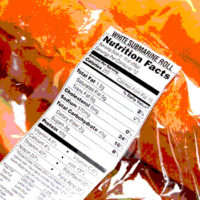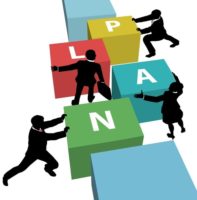Back to the Future: Propelling Agriculture with Business Metrics, Automation and Technology

Farming Is Hard
In today’s farming industry, the challenges of operating profitability are continuing to mount. Food safety, regulatory requirements, traceability, recalls, price pressure, rising insurance and labor costs, labor shortages and, of course, making enough money to stay in business. Automation increases efficiency but it can be complicated and expensive, although it is an important aspect of staying competitive. These things, together with other factors like weather and various pests, make for a tough environment.
Leveling the Playing Field
To cope and level the playing field with the big corporations, farmers need to take every advantage they can get. One increasingly affordable and accessible tool is technology—all forms of technology, from software and thermal cameras to radio-frequency identification (RFID) to Blockchain.
By the way, what the heck is Blockchain? More on that later.
Software systems designed to help farmers to not only survive, but thrive, are now available and easy to install and use. Most importantly, they are affordable. They provide a smooth interface to printers, scales, scanners and many other devices crucial to running today’s farm. They enable the modern farmer to stay informed and view all data regarding their products as they move from harvest to consumer. With the advent of cloud-based software systems, you don’t have to worry about computing power, expensive hardware, back-ups or large initial payments for software and installation. All you need is a good internet connection to access the technology company’s cloud server, and you’re ready to go. But not to worry if you don’t have a reliable internet connection. Modern software works just as well on a moderately capable computer. Pricing is usually affordable with this configuration too as it often comes on a subscription, pay-as-you-go basis.
Visibility Through Software
In a modern agricultural operation of even modest size, the number one priority is visibility into the operation. You can’t manage what you don’t measure. Where did that product come from? How much do we have? What field? What day was it harvested? What did it weigh; what is its size? There is so much to know about the business. To fulfill orders quickly, a farmer must know how much inventory is on hand and where it is located on the farm. As purchase orders arrive, being able to fulfill them quickly and accurately depends on having an accurate picture of shippable inventory. These days, smart software knows where each bin of produce is and can guide warehouse personnel to the exact location for each item. Picking directions are transmitted wirelessly to tablets, speeding the whole process up dramatically.
Collecting the data you need is easier than you might think. This can be either manual or automated. In most cases, we create and print the barcode label in the field or at the collection center. Wireless technology makes printing and collecting data flexible, portable and reliable. Hand-held scanners capture the data from the barcoded label as it moves through the process to track progress, movement and location. Just as easily, RFID tags can be printed and attached to the produce, allowing for an even-more automated tracking mechanism. RFID readers stationed strategically will record the product's movement throughout of the facility.
This technology, whether barcode or RFID, tracks the produce as it’s processed into a shippable batch. The information is carried forward and a new tag is printed for the batch indicating all the characteristics of the produce which has gone into that specific batch. Most agriculture software systems include a database that stores everything you need to know about the product and the operation.
Managing Recalls
No one wants the chaos and worry of a recall. Recalls have the potential to be financially devastating. In the case of a recall, technology and data are your friends! If there is a problem with your produce, being able to isolate the issue to the smallest possible source can significantly limit the impact.
Most software systems offer recall reports to help you both isolate the problem and answer any questions your customer might have relative to a particular product. You can isolate produce to a time and a field, instead of recalling everything from an entire farm. You can trace a product by field, harvest date, storage location, crew or a host of other indicators. All of this helps isolate the problem to have the smallest possible impact. This can be accomplished in a matter of minutes or hours with a minimum of effort.
The entire process of collecting data and being able to quickly recall a product contributes significantly to higher food safety. Farmers are able not only able to track the movement of goods through their operation, but also to monitor the condition of the produce as it moves through the supply chain. This gives them the information they need to deliver fresh and safe produce to the consumer.
Back to the Future
Software and cloud services are making tools accessible to the farm that historically would be too expensive or too cumbersome to implement. In addition to modern software and database systems, other technologies are available to make farming an even more tech-rich business.
IoT
Internet of Things (IoT) is a broad term that describes myriad potential sensors and devices that can be extremely useful in farming. These devices are usually connected to the farm. Management software and their readings can be stored in the system’s database for later action or reporting. Some devices that are particularly useful in farming are described below.
Thermal Imaging Cameras
These cameras can be used to measure crop temperature at harvest to better calculate shelf life. For perishable goods, a smart system will select products to ship by matching distance to destination with remaining shelf life. This goes a long way toward limiting spoilage during transit and eliminating returns.
Another handy use for thermal cameras is to measure the storage temperature of temperature sensitive produce or goods. The camera can measure temperature overwide spaces and sound an alarm if the temperature goes out of range.
For some greenhouse crops, there is a strong correlation between leaf temperature and yield. If the leaves are kept in the right temperature range, crop yield can be as much as 40 percent higher.
Blockchain
There’s a lot of talk these days about Blockchain. It was first used in digital currency, most notably bitcoin. So, what does this have to do with farming? Blockchain is a system that ensures data doesn’t get tampered with or corrupted. It uses multiple servers to keep multiple copies of the data, and more importantly, it assigns a unique code to each record (for example, the batch tag that lists field, farm, storage location, harvest date and a host of other information). This code—called a hash—will change dramatically if even a period or letter is changed in the database. All the servers holding the data must agree as well. This will ensure that all data related to your produce is accurate and that no one can tamper with it as it moves through the supply chain.
Conclusion
New technology is being put to good use in the farming industry. It’s saving farmers money and improving the quality of the food we eat. Technology is allowing for increased visibility, and it is giving farmers the ability to better control their supply chain. RFIDs track the produce automatically, and thermal cameras and other IoT devices direct shipping for minimum spoilage in ways we never could before. With precise technology being developed for the farming industry, the future of food safety and farming in general in is moving in the right direction.
Tom Gruenwald is the chief operating officer of Vu360 Solutions.
Looking for a reprint of this article?
From high-res PDFs to custom plaques, order your copy today!




